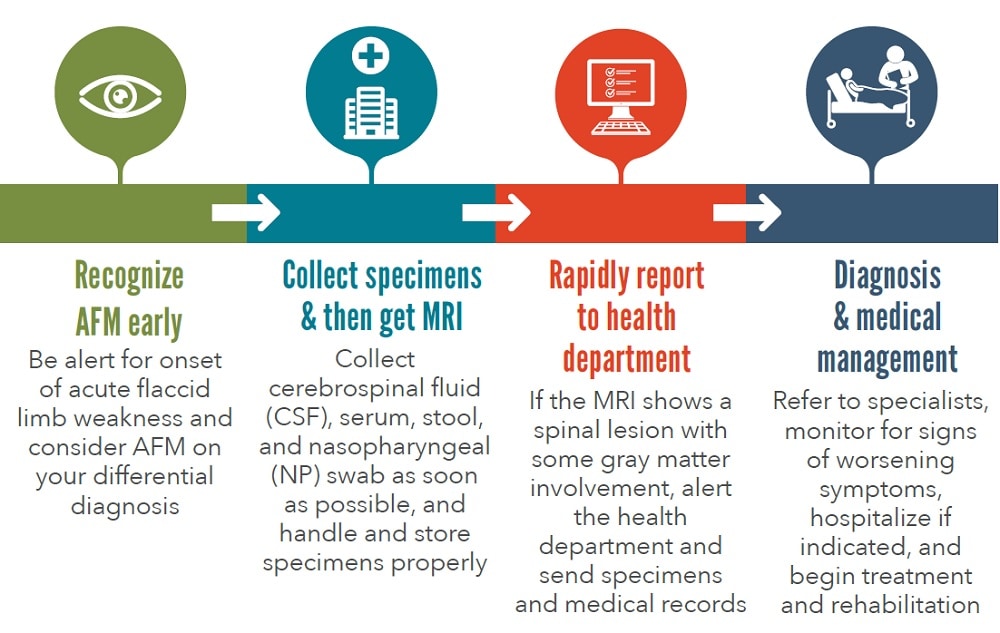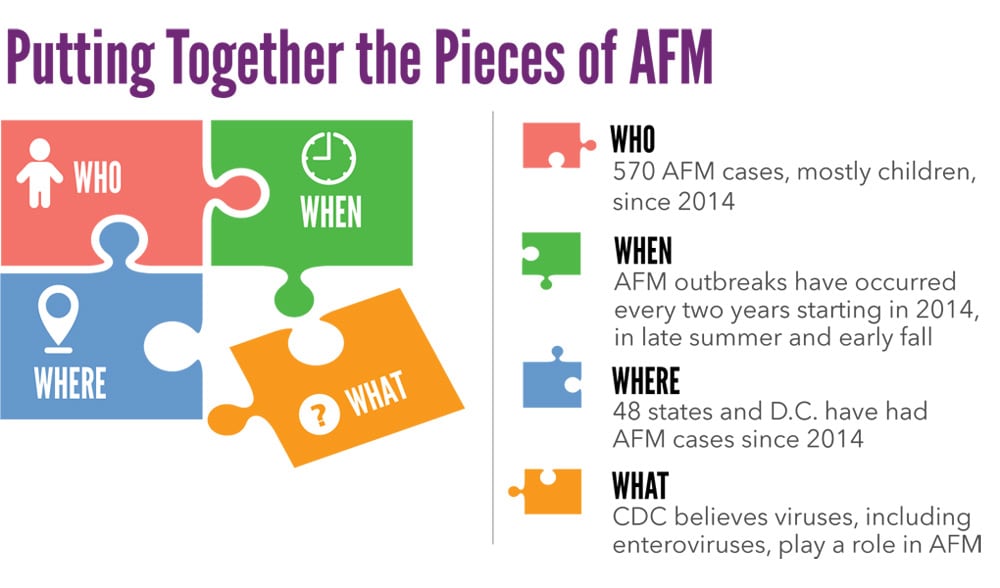Data Visualization: Acute Flaccid Myelitis (AFM)
Data Visualization – Clinicians: Timing is Key for AFM
Text Description:
Clinicians: Timing is Key for AFM
Recognize AFM early
Be alert for onset of acute flaccid limb weakness and consider AFM on your differential diagnosis
Collect specimens & then get MRI
Collect cerebrospinal fluid (CSF), serum, stool, and nasopharyngeal (NP) swab as soon as possible, and handle and store specimens properly
Rapidly report to health department
If the MRI shows a spinal lesion with some gray matter involvement, alert the health department and send specimens and medical records
Diagnosis & medical management
Refer to specialists, monitor for signs of worsening symptoms, hospitalize if indicated, and begin treatment and rehabilitation
Data Visualization – Putting Together the Pieces of AFM
SOURCE: CDC Vital Signs, July 2019
Text Description:
Putting Together the Pieces of AFM
WHO
570 AFM cases, mostly children, since 2014
WHEN
AFM outbreaks have occurred every two years starting in 2014, in late summer and early fall
WHERE
48 states and D.C. have had AFM cases since 2014
WHAT
CDC believes viruses, including enteroviruses, play a role in AFM
SOURCE: CDC Vital Signs, July 2019
For More Information
1-800-CDC-INFO (232-4636)
TTY: 1-888-232-6348
Web: www.cdc.gov
Centers for Disease Control and Prevention
1600 Clifton Road NE
Atlanta, GA 30333
Publication date: July 9, 2019

